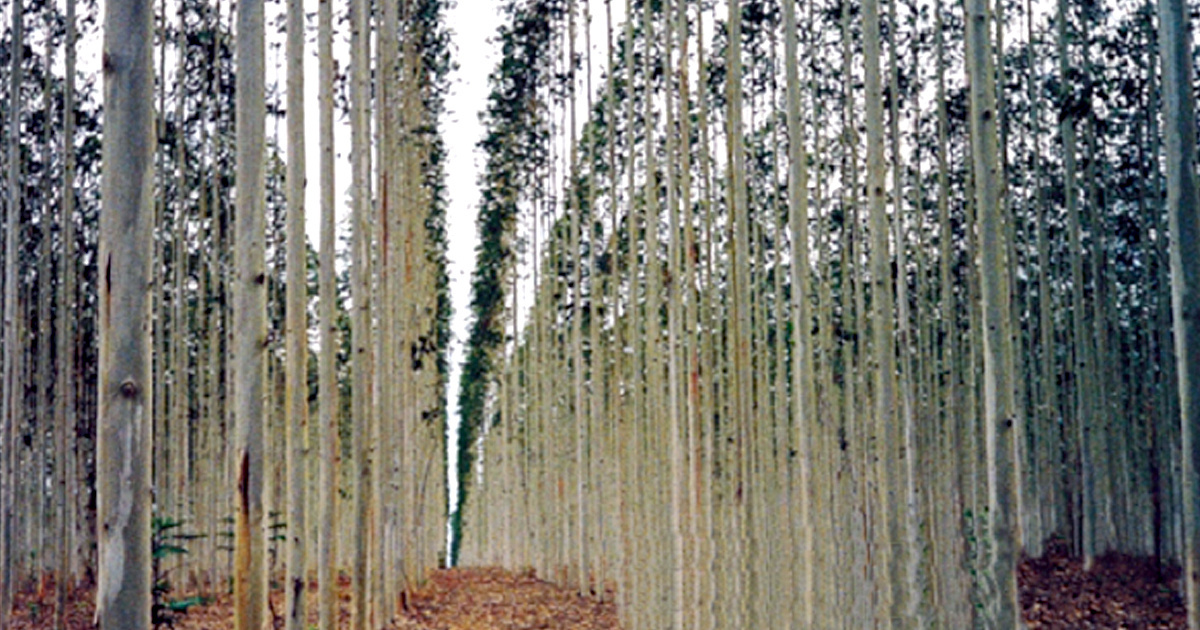
250,000+ Oppose USDA Proposal to Approve First-Ever Genetically Engineered Forest Tree

More than a quarter of a million people and 500 organizations submitted comments Wednesday rejecting the commercialization of ArborGen Inc.’s genetically engineered (GE) eucalyptus trees, which, if approved, would be the first-ever GE forest tree approved in the U.S.
The U.S. Department of Agriculture (USDA) proposed approval in April 2017, releasing a draft Environmental Impact Statement (dEIS) for public comment. This comment period ended on July 5. The GE eucalyptus trees are engineered to tolerate freezing temperatures in order to greatly expand their growing range. The approval of these GE trees could set a precedent for future approval of GE forest trees such as poplar and pine.
In the dEIS, USDA downplayed or ignored the significant risks posed by these novel GE trees. The agency conservatively predicts commercial GE eucalyptus plantations would cover more than one million acres across seven southern states—from coastal South Carolina to eastern Texas. This would have devastating consequences across this region, which is home to a number of the poorest counties in the country, as well as some of the most biodiverse ecosystems in the world. The region is already precariously threatened by climate change and sprawl.
“GE eucalyptus plantations spread across the South would be a disaster,” stated Dr. Marti Crouch, consulting scientist for the Center for Food Safety. “Some non-GE eucalyptus species have already become invasive and are degrading natural areas. Plants and animals, including endangered species, will be unable to find suitable habitats within landscapes dominated by GE eucalyptus. Approving these trees is a terrible idea.”
Just last month in Portugal, catastrophic wildfires that killed dozens were directly blamed on eucalyptus plantations that comprise more than one-quarter of Portugal’s tree cover. In January, Chile experienced the worst wildfires in its history. In both cases, eucalyptus monocultures—well-known for being extremely flammable and depleting ground water—contributed to dry conditions that combined with heat waves to create the perfect setting for wildfire. Already the U.S. South is experiencing frequent droughts and heat waves, and climate change forecasts predict more of the same. The dEIS made no mention of climate change impacts in its proposed approval of these GE eucalyptus trees.
“GE eucalyptus is being pushed for commercialization to help feed the skyrocketing demand for trees for biomass electricity,” said Ruddy Turnstone, GE Trees Campaigner for Global Justice Ecology Project, and a resident of Florida in the region targeted for GE eucalyptus plantations. “But biomass is a false solution to climate change. Not only is it a major polluter, climate-stabilizing Southeastern forests are being decimated for the booming European biomass industry. GE eucalyptus plantations will only escalate this deforestation.”
USDA’s assurances that GE eucalyptus will not escape into native forests are fatally undercut by the U.S.’s 30-year experiment with GE crops, which have escaped containment over and over again, despite industry and USDA claims they would not. GE trees are even more likely to escape and spread than GE crops, given their much longer lives, pollination distances and the unpredictable, changing conditions that can occur over the lifespan of the trees.
“Forests are interwoven with human evolution,” stated Dr. Rachel Smolker, Co-Director of Biofuelwatch and Steering Committee member of the Campaign to STOP GE Trees. “They regulate and stabilize water flow and climate, enrich soils and prevent erosion. They provide food, medicine, shelter, fuel, livelihoods, recreation and sanctuary for peoples around the world. They literally make life on Earth possible. Trees have evolved over the eons in adaptation to their native environments. Tweaking their genetics and planting them in foreign environments demonstrates an alarming lack of understanding of ecology and genetics.”
Beyond the ecological impacts are the effects on local communities that will result from these GE eucalyptus plantations. “GE eucalyptus trees exemplify the unjust and unsustainable forestry model,” explained BJ McManama of the Indigenous Environmental Network. “There are already hundreds of documented human rights abuses resulting from the unchecked expansion of eucalyptus plantations in Central and South America. Indigenous and traditional communities are poisoned by exposure to deadly chemicals and in some cases violently evicted from their ancestral lands. These abuses demonstrate the forest industry’s blatant disregard for both people and the environment. USDA must deny this petition.”
Public opposition to GE eucalyptus has been consistent and strong. In February 2013, the government released ArborGen’s GE eucalyptus petition for public comment, resulting in a response of 10,000 to one opposing the GE eucalyptus trees. This was followed by the then-largest ever protest against GE trees at the Tree Biotechnology Conference in Asheville, North Carolina. In April of this year the USDA finally made public their draft findings recommending approval of ArborGen’s petition, eliciting yesterday’s avalanche of comments rejecting GE eucalyptus trees in the U.S. Even the dEIS itself highlights public opposition as creating risks for investors:
“An additional source of risk that extends beyond the scope of this study is the risk of some public backlash against the planting of genetically modified trees. This societal risk could affect investment choices in the same fashion as biophysical risk—i.e., increased risk would reduce the rate of adoption.”

 233k
233k  41k
41k  Subscribe
Subscribe 